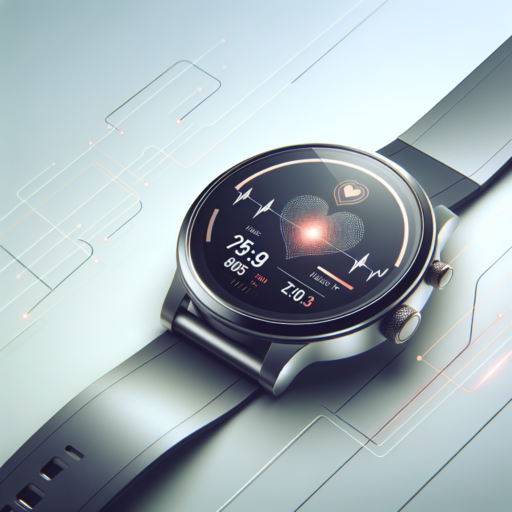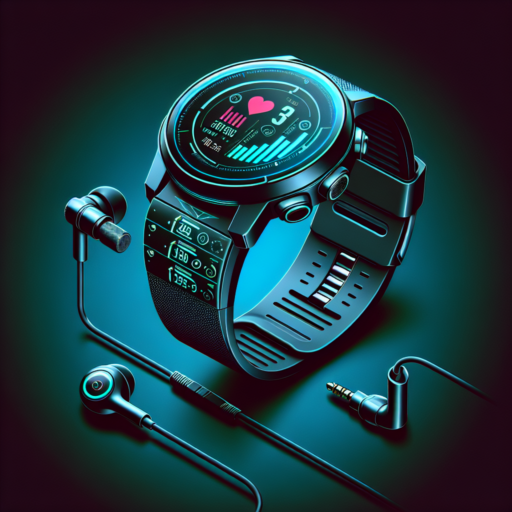What is the most accurate watch for heart rate?
When discussing the accuracy of heart rate watches, it’s crucial to consider the technology they employ. These devices, often worn on the wrist, utilize optical heart rate sensors to detect your pulse. This method, while convenient for continuous monitoring, can sometimes be affected by factors such as movement or poor fit, which may slightly impact accuracy. However, advancements in technology have significantly improved the precision of these watches, making them an excellent tool for athletes and health enthusiasts alike.
Factors Affecting Accuracy
Several key factors contribute to the accuracy of a heart rate watch. The first is the quality of the sensor technology. Modern watches use advanced optical sensors that can more accurately detect blood flow changes under the skin. The fit of the watch is equally important; it should be snug but comfortable, as a watch that’s too loose may not capture accurate readings. Lastly, the specific algorithm used by the watch to interpret sensor data can greatly influence accuracy. Manufacturers continuously refine these algorithms, enhancing the reliability of their devices.
Leading Brands and Models
Though many brands claim to offer superior accuracy, a few stand out due to their consistent performance and positive user reviews. Garmin and Polar are frequently cited for their precision, with models such as the Garmin Forerunner and Polar Vantage series being notable examples. These watches are favored not only for their accuracy but also for their extensive range of health and fitness features. Additionally, Apple Watch has made significant strides in heart rate monitoring accuracy with its latest models, making it a strong contender for those integrated into the Apple ecosystem.
In summary, while the quest for the most accurate heart rate watch involves considering various factors, certain brands and models have established themselves as leaders in this space. Advancements in sensor technology and data interpretation continue to push the boundaries of what’s possible, ensuring that users can track their heart health with confidence.
Can a smartwatch really measure heart rate?
The question of whether a smartwatch can truly measure heart rate is a hot topic for both tech enthusiasts and health-conscious individuals. At the heart of this discussion is the technology embedded in these wearable devices. Most smartwatches use a method known as photoplethysmography (PPG) to track the rate at which the heart beats. This method involves emitting light into the skin and measuring the amount of light either absorbed or reflected by the blood vessels. The changes in light absorption. during the blood pulse through the vessels give the device an ability to estimate heart rate.
Accuracy is a significant concern when it comes to the heart rate data provided by smartwatches. Studies have shown that while these devices are generally accurate in measuring heart rate during rest, their accuracy can vary during intense physical activity. Factors such as the smartwatch’s position on the wrist, skin tone, and even the level of physical activity can influence the precision of the heart rate measurement. Despite these challenges, continuous advancements in technology are improving smartwatch sensors, making them more reliable indicators of heart rate over time.
The utility of smartwatches in monitoring heart rate extends beyond just providing numbers. These devices can help users identify trends in their heart rate data, allowing for better understanding and management of their health. For instance, sudden increases in resting heart rate over time could signal a need for medical attention. Moreover, the integration of heart rate data with other health metrics collected by the smartwatch, such as activity levels and sleep patterns, offers a comprehensive view of an individual’s well-being.
What smartwatch do cardiologists recommend?
When delving into the world of wearable technology for health monitoring, cardiologists often emphasize the importance of accuracy, reliability, and comprehensive heart rate monitoring features. While the market is flooded with various smartwatches boasting heart health tracking capabilities, several models stand out for their advanced cardiac monitoring functions, making them preferred choices among heart specialists.
Key Features in Cardiologist-Recommended Smartwatches
ECG Functionality: Electrocardiogram (ECG) capabilities allow these smartwatches to detect irregular heart rhythms, such as atrial fibrillation. This can be critical in preventing heart complications and is a feature cardiologists value greatly in smartwatch technology.
Heart Rate Alerts: Devices that can provide real-time alerts for abnormal heart rates are essential for early detection of potential heart-related issues. These alerts can prompt users to seek medical advice promptly.
Blood Oxygen Monitoring: While not exclusively a cardiac function, blood oxygen monitoring is another important feature in these smartwatches. The ability to track oxygen saturation levels can offer insights into overall heart and lung health, aspects which cardiologists find valuable for patients with cardiovascular concerns.
Given these criteria, smartwatches like the Apple Watch Series, with its clinically validated ECG app and irregular rhythm notification feature, often come highly recommended by cardiologists. Similarly, certain models from brands like Garmin and Fitbit, known for their precision in health metrics, regularly receive commendations for their comprehensive heart health monitoring tools. These devices provide not just the data needed for regular monitoring, but also the peace of mind that comes with knowing one’s heart health is being closely watched.
Are watches accurate for heart rate?
When it comes to tracking heart rate, watches have become a popular tool for those looking to monitor their physical health. However, the accuracy of these wearable devices can vary based on several factors. It’s important for users to understand how these factors influence the reliability of the data they’re getting.
Technology Behind the Measurement
The majority of smartwatches use photoplethysmography (PPG) technology to measure heart rate. This method involves emitting light into the skin and measuring the light absorption changes as blood pumps through the veins. While this technology allows for continuous heart rate monitoring without the need for chest straps, its accuracy can be affected by movement, skin tone, and the fit of the watch. These variables may lead to discrepancies in heart rate readings compared to more traditional, clinical methods of measurement.
Comparing to Clinical Standards
When considering the question of accuracy, it’s pivotal to compare the performance of watches against clinical-grade devices. Studies have shown that while fitness watches can provide a good estimate of heart rate, they tend to be more reliable during rest than during high-intensity activities. This discrepancy is believed to be due to the challenges PPG technology faces with rapid movements and changes in blood flow, highlighting the importance of context in interpreting heart rate data from watches.
Consumer Considerations
For everyday users, the key to maximizing the accuracy of wrist-based heart rate monitors lies in wearing the device as recommended – snugly against the skin, above the wrist bone. Users should also consider calibrating their device with a traditional heart rate monitor if possible. Regardless, individuals looking for precise heart rate measurements for medical purposes might still prefer to rely on more traditional, clinically-proven methods.









